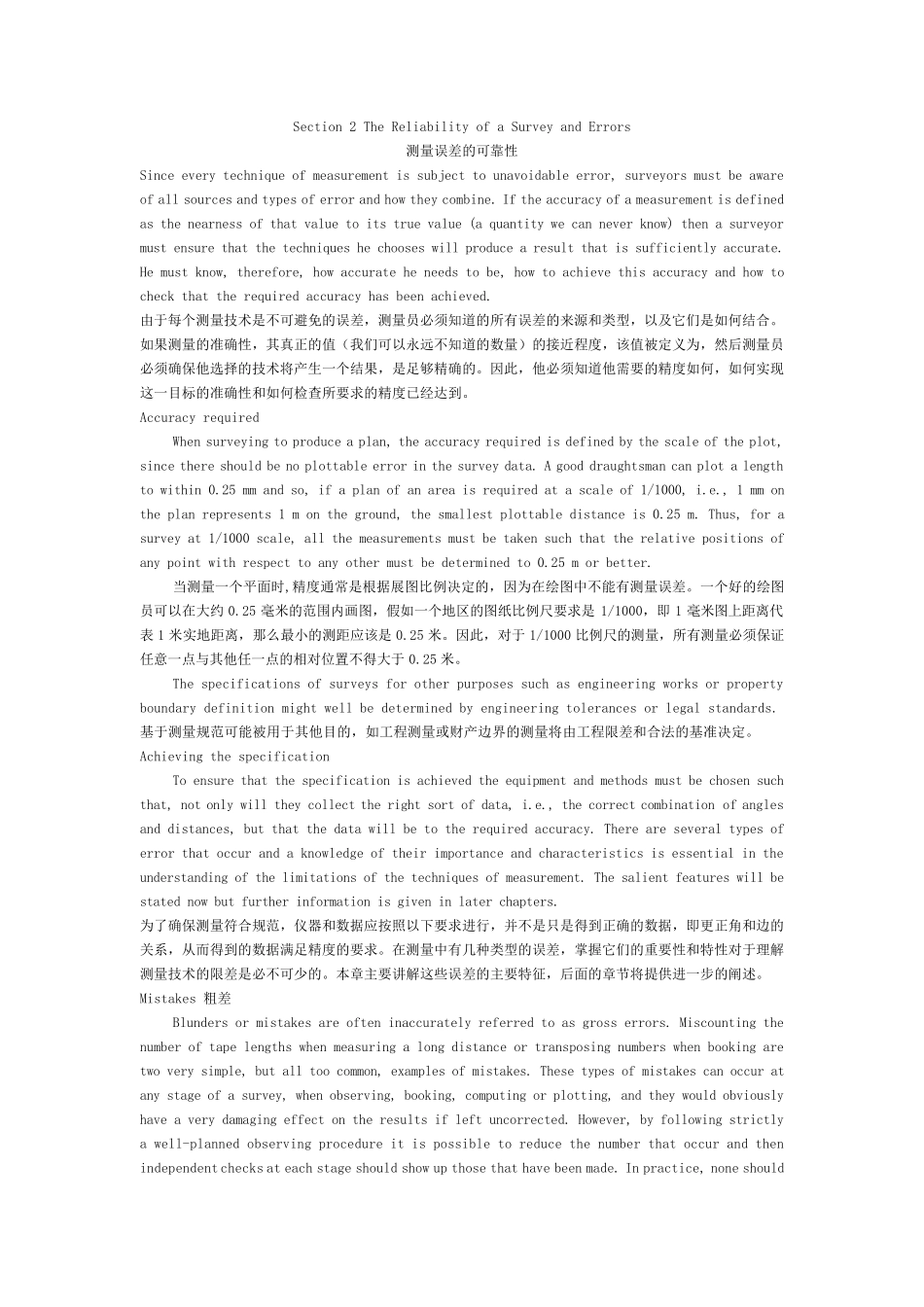Section 2 The Reliability of a Survey and Errors 测量误差的可靠性 Since every technique of measurement is subject to unavoidable error, surveyors must be aware of all sources and types of error and how they combine. If the accuracy of a measurement is defined as the nearness of that value to its true value (a quantity we can never know) then a surveyor must ensure that the techniques he chooses will produce a result that is sufficiently accurate. He must know, therefore, how accurate he needs to be, how to achieve this accuracy and how to check that the required accuracy has been achieved. 由于每个测量技术是不可避免的误差,测量员必须知道的所有误差的来源和类型,以及它们是如何结合。如果测量的准确性,其真正的值(我们可以永远不知道的数量)的接近程度,该值被定义为,然后测量员必须确保他选择的技术将产生一个结果,是足够精确的。因此,他必须知道他需要的精度如何,如何实现这一目标的准确性和如何检查所要求的精度已经达到。 Accuracy required When surveying to produce a plan, the accuracy required is defined by the scale of the plot, since there should be no plottable error in the survey data. A good draughtsman can plot a length to within 0.25 mm and so, if a plan of an area is required at a scale of 1/1000, i.e., 1 mm on the plan represents 1 m on the ground, the smallest plottable distance is 0.25 m. Thus, for a survey at 1/1000 scale, all the measurements must be taken such that the relative positions of any point with respect to any other must be determined to 0.25 m or better. 当测量一个平面时,精度通常是根据展图比例决定的,因为在绘图中不能有测量误差。一个好的绘图员可以在大约 0.25 毫米的范围内画图,假如一个地区的图纸比例尺要求是1/1000,即 1 毫米图上距离代表 1 米实地距离,那么最小的测距应该是0.25 米。因此,对于1/1000 比例尺的测量,所有测量必须保证任意一点与其...


